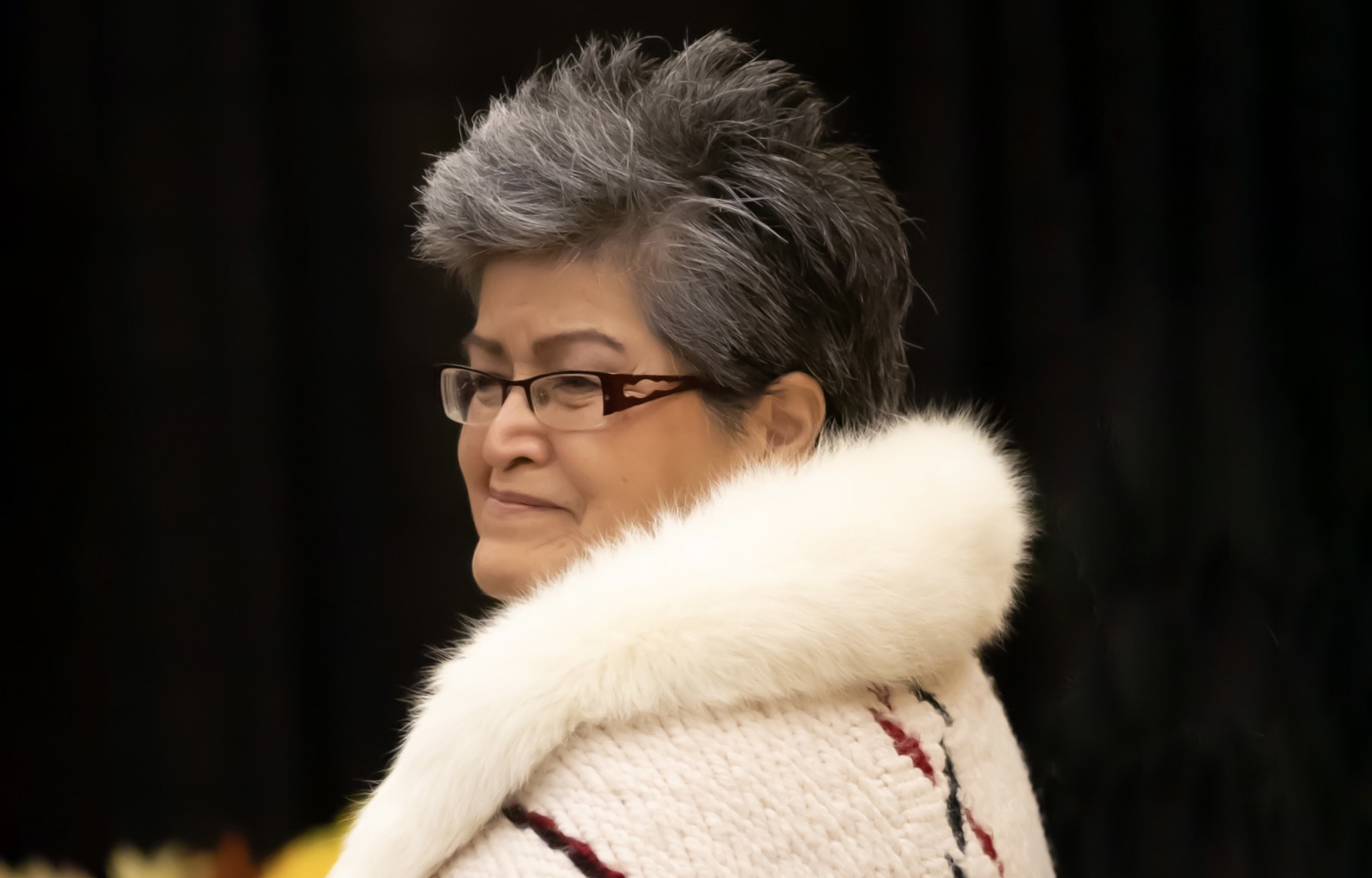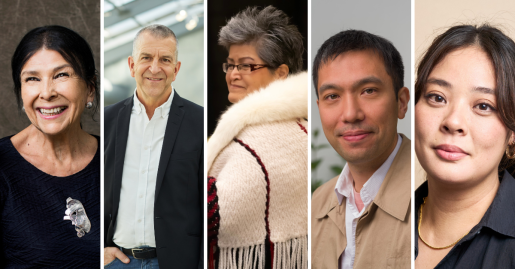How Alanis Obomsawin Changed the World

Alanis Obomsawin. (Photo by Julie Artacho)
Posted on
The renowned artist, filmmaker and 2025 Honorary Degree recipient reflects on her most powerful inspirations.
As she looks back on her storied career, a central theme emerges from the reflections of legendary artist and filmmaker Alanis Obomsawin. It weaves its way through the entirety of her acclaimed documentary practice, through her early work as a singer, and even back to her childhood. That theme is the power and beauty of the human voice.
A member of the Abenaki Nation, Alanis was born in New Hampshire on Waban-Aki territory, moving with her family to Odanak, QC, at six months old. In Alanis’ telling, the dynamics and figures that defined this close-knit community constitute an enduring influence, laying the groundwork for nearly everything she would go on to achieve (including finding expression in films such as Sigwan and the award-winning Waban-aki: People from Where the Sun Rises)
Speaking with Emily Carr University of Art + Design (ECU) as a 2025 Honorary Degree recipient, Alanis recalls evenings spent gathered around oil lamps in the kitchen to hear stories told by family and friends.
“We were always at least three children,” she says, adding that with storytelling, “there’s no image. You create the image in your head from sound … So, I have so much respect for the voice because I spent my young life listening to stories but not yet seeing the images. It was just through my imagination.”
For Alanis, sound — and specifically the human voice — is “sacred.” This reverence animates her filmmaking practice from its earliest days. Her 1971 directorial debut, Christmas at Moose Factory, is a story about children in a northern Ontario residential school told in their own words.
She suggests the children’s English — spoken with a Cree accent — is especially evocative, offering a quilting point for culture, place and lived experience.
“I wanted people to hear their voice,” Alanis says. “Still today, people have a certain way of speaking English or French and you know where they come from just by the accents that they have. And it’s just beautiful. This is what you hear when you hear Christmas at Moose Factory. The children not being afraid of expressing themselves. They’re so beautiful.”
Alanis has devoted her life to creating space for Indigenous people to express themselves — whether personally, politically, culturally, institutionally or otherwise — without fear of judgement or reprisal. Through dozens of films, a record album and hundreds of engagements with classrooms from coast to coast, she has worked to build the world she wishes to see.
“I did not have a very good life as a child, and I didn’t want other children to be treated like that,” she says, recalling the epithets and punishments she was subjected to by authority figures and institutions for the mere fact of her Indigeneity. “They were teaching hate towards our people for many generations. And then when I understood, I became a fighter against it … I felt that the children should hear other stories than what they were hearing.”
She says what she wanted most was “the voice of our people to be heard in the educational system, especially;” that she could share her belief in “our people, the culture, the language, all the beautiful ways of living;” and that hate could be countered through education.
Now, at 92 years old, Alanis says she feels she “won that battle,” pointing to the advice she gives to the young Indigenous people she meets.
“I tell them, ‘Look into your heart. What would you like to be? It’s possible. Everything is possible now,’” she says. “I feel so lucky to still be here and see the difference.”
Hear more from Alanis in our feature video interview on ECU’s YouTube channel. Find interviews with the rest of our 2025 honorary degree recipients
alongside all the videos from this year’s grad events on our ECU Graduation playlist.



